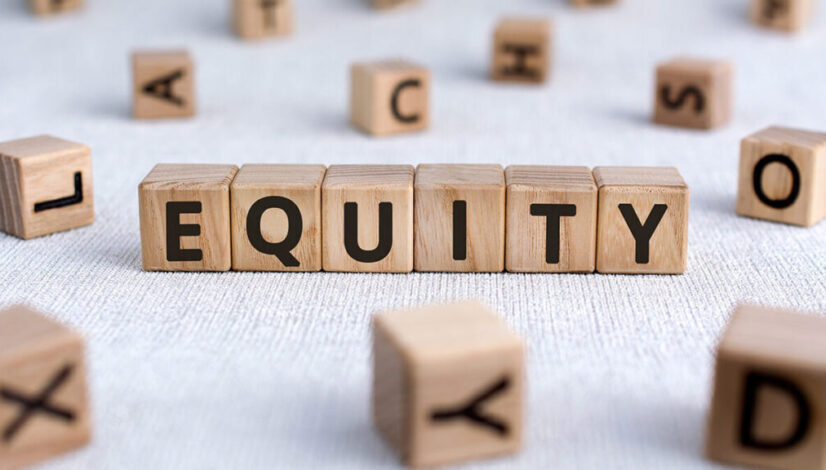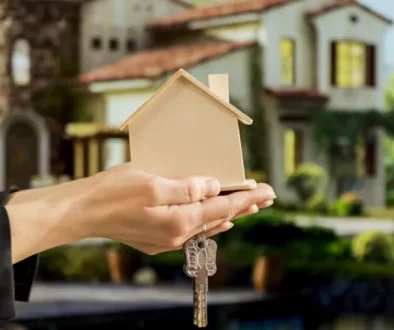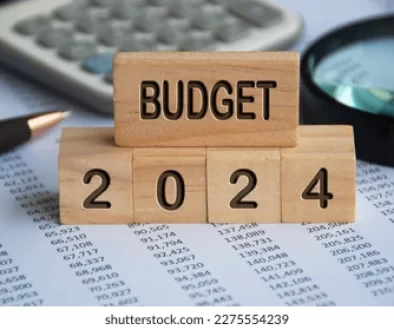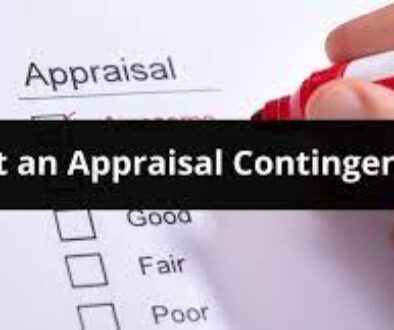Equity
Equity
What Is Home Equity?
As mentioned above, home equity is the amount of your home that you actually own. Specifically, equity is the difference between what your home is worth and what you owe your lender. As you make payments on your mortgage, you reduce your principal – the balance of your loan – and you build equity. Once you have enough equity built up, you can access it by taking out a home equity loan, home equity line of credit (HELOC) or by using a cash-out refinance.
If you still owe money on your mortgage, you only own the percentage of your home that you’ve paid off. Your mortgage lender owns the rest until you pay off your loan.
For example, let’s say you buy a home worth $200,000 with a 20% down payment of $40,000. In this case, you would have $40,000 of equity in your home as soon as you close. With every mortgage payment you make, the balance of your loan decreases, and you build more and more equity (assuming your home value doesn’t decline). When your mortgage is 100% paid off, you have 100% equity in your home.
Can The Equity In Your Home Change?
Yes! It can be difficult to calculate exactly how much equity you have in your home because home values are constantly changing.
There are two ways you can increase your home equity: You can pay down your principal or wait for your home value to rise.
Pay Down Your Principal
Every time you make a mortgage payment, you gain a little more equity in your home. At the very beginning of your mortgage repayment, you gain equity slowly because most of the money you pay in the first few years goes toward interest instead of your mortgage’s principal.
As you pay down your balance, a higher proportion of your monthly payment goes toward the principal balance instead of interest. This process, called amortisation, helps you build equity faster toward the end of your loan term.
If you want to build equity faster in the first few years of your mortgage, you can pay more than your minimum monthly payment. Just tell your lender that the extra money should be applied to your principal.
Wait For Your Home Value To Rise
Equity is based on the appraised value of your home. The equity you have is equal to how much an appraiser believes your home is worth, minus the balance of your loan. For example, let’s say you bought a $250,000 home with a $200,000 mortgage. A few years later, your home appraises for $300,000 because the housing market is hot. If you’d paid the loan down to $150,000, you’d have $150,000 in home equity.
Unfortunately, this process also works in reverse. If your local housing market takes a turn for the worse and the value of your property decreases, your equity decreases as well. The amount you’d owe on your mortgage wouldn’t change, but your equity in the property would.
How To Calculate Your Home Equity
To calculate your equity, determine how much you still need to pay on your mortgage principal. Your lender will be able to tell you the balance of your loan.Next, estimate how much your home is worth. To do this, look at the sale prices of similar homes that have sold near you.
If you’re thinking about refinancing, it’s important to know that lenders usually require an appraisal to determine the home’s value and the amount of equity you have. Estimating your home value can give you a rough idea of how much equity you have, but an appraisal is the only way to know for sure.
How Can You Use Your Home Equity?
You can access the equity you’ve built for several different purposes, including lowering your mortgage payment, making home improvements,paying school tuition and consolidating debts.
Remove Private Mortgage Insurance (PMI)
Though you no longer need a 20% down payment to buy a home with a conventional loan, most lenders require you to purchase private mortgage insurance if you don’t put at least 20% down. Even though the borrower pays for it, PMI only protects the lender. Most homeowners prefer to cancel PMI as soon as possible.
If you have a conventional loan, PMI is automatically cancelled once you reach 22% equity in your home, according to your regular payment schedule. However, you can request that your lender cancel PMI once you’ve reached 20% equity in your home.
If you believe you’ve reached 20% equity because your home’s value increased, you can contact your lender to remove PMI as well. In this case, your lender will likely require an appraisal to verify the value of the home.
Make Home Improvements
Do you want to renovate your home, but don’t have the cash on hand? You can pay for home improvements by refinancing your mortgage. When you finance your renovations using the equity in your home, you’ll be paying for the renovations at a much lower interest rate than if you were paying for them with a credit card or personal loan.
Pay For Tuition
College can be expensive, and student loans aren’t always the lowest-interest way to cover tuition and room and board. You can use your home equity to get cash for tuition or to consolidate your existing student loans into a single, lower-interest loan.
Consolidate High-Interest Debts
Mortgage refinance and home equity loan interest rates are typically much lower than interest rates for credit cards, auto loans and personal loans. If you have any of these high-interest debts, you can save big by putting your home’s equity to work.
- Consolidating debt simplifies your payments. By paying off your bills with cash from your home, you’ll bundle your debt payments into a single, lump-sum loan.
- You’ll save big on interest. Interest rates for credit cards and personal loans commonly exceed 10%, while mortgage refinance and home equity loan interest rates are usually significantly lower.
By using equity to consolidate debt, you could pay less every month to pay off the same amount of money.
How Can You Access Your Home Equity?
You can get access to your home equity through a cash out refinance, a home equity loan, a home equity line of credit (HELOC) or a reverse mortgage.
Cash-Out Refinance
A cash out refinance allows you to take out your equity by getting a new mortgage at a higher loan amount. You replace your current mortgage with a bigger one and get the difference in cash. Like any refinance, your new mortgage pays off your old one, so you just have one monthly mortgage payment. It generally takes between 30 and 45 days to refinance..
When you do a cash-out refinance, you usually need to leave some equity in the home. The amount you’ll have to leave depends on the type of loan you’re seeking, but you should expect to leave about 20% equity in the home.
You can use the money from a cash-out refinance for anything you want. There are no restrictions on how you can use it, and the money is tax-free.
Home Equity Loan
A home equity loan is a second mortgage on your home. It doesn’t replace your current mortgage; it’s a second mortgage that requires a separate payment. For this reason, home equity loans tend to have higher interest rates than first mortgages.
Like a cash-out refinance, a home equity loan is a secured loan that uses your home equity as collateral. This gives you access to lower interest rates than unsecured loans, like personal loans.
Once you close on your home equity loan, you’ll receive a lump-sum payment from your lender, and in return, you’ll make payments on the loan over a predefined term.
.Home Equity Line Of Credit (HELOC)
A home equity line of credit is also a second mortgage on your home. The main difference is that a HELOC gives you a line of credit you can draw from when you need it. The credit limit corresponds to the amount of equity you have in your home.
You can withdraw money from your HELOC at any time during the draw period defined by your lender. Most draw periods are between 5 and 25 years. HELOCs may have a minimum monthly payment due (similar to a credit card), or you may need to pay off the accrued interest each month. At the end of the draw period, you’ll need to repay the full amount you borrowed.
Interest rates on HELOCs are usually based on an index, not a fixed rate, meaning they can change over time. There are usually no limits on the amount the interest can increase each period. If you choose a HELOC over a cash out refinance make sure you carefully monitor your spending and interest accumulation.
Reverse Mortgage
If you’re over the age of 62 and would like to boost your retirement savings, you may want to consider a reverse mortgage. There’s no monthly mortgage payment with a reverse mortgage, though you must still pay taxes and insurance.
With a reverse mortgage, your loan amount is based on the amount of equity you have in your home. If you have an existing mortgage, the proceeds of the loan are used to pay it off. The remaining balance is available for you to use as you see fit.
There are different types of reverse mortgages Each may disburse the proceeds from a reverse mortgage in several ways:
- As a lump sum of cash at closing (which happens with a proprietary reverse mortgage
- Through monthly payments you’ll receive as long as you live in your home
- Through monthly payments for a fixed period of time
- Through a line of credit you can draw on at any time
A reverse mortgage can be a good choice for homeowners who plan to stay in their home indefinitely and aren’t worried about leaving an inheritance. It can give you cash in retirement if you don’t have anywhere else to get it.
Is Using Your Home Equity A Good Idea?
Using the equity in your home can be a great way to cover expenses or consolidate higher-interest debt. However, it’s not something you should enter into lightly. You need to weigh the pros and cons before you take out a loan.
The Pros
Here are a few reasons you should consider using your home equity:
- Lower interest rates: Home equity loans, lines of credit and cash-out refinances typically have lower interest rates than credit cards and personal loans. This means you’ll pay less in interest and may save thousands of dollars.
- No restrictions on use: When using your home equity, you can use the money to cover whatever expenses you deem necessary.
- Some tax benefits: If you’re using the money to help cover the cost of home repairs or home improvements, you may be able to deduct a portion of the interest you pay on your taxes. This can reduce how much you’ll owe the IRS at the end of the year.
The Cons
Here are a few reasons you may want to rethink using your home’s equity to help cover expenses:
- Puts your home at risk: Home equity loans, lines of credit and cash-out refinances are secured by your home. If you fail to make payments on time or default, you risk losing your home.
- May give you an extra monthly payment: Unless you’re using a cash-out refinance, you’ll end up with two payments due every month. This can make it harder to stay on top of your finances.
- Required closing costs: You typically pay closing costs when you take out a home equity loan or HELOC or cash-out refinance. The closing costs generally range from 2% to 5% of the loan’s principal, which could cost you thousands upfront.
FAQs About Home Equity
Building home equity is a great way to increase your assets. Here are some frequently asked questions to help you better understand your options and how to access the equity you’ve built in your home.
What is home equity?
Home equity is the amount of home you own outright. You can calculate your home equity by subtracting the amount you’ve paid on your mortgage from your mortgage’s principal balance.
How quickly can I build equity in my home?
You can build equity as quickly as you can afford to. Remember, your monthly mortgage payments cover a portion of your loan’s principal and interest. The more you can pay down your loan’s principal, the more equity you’ll build. Making extra principal-only payments as often as possible will help you build equity faster, but may trigger prepayment penalties.
Are there restrictions on how I can use the money from my home equity loan?
In most cases, you can use the money from your home equity loan however you see fit. Use it to consolidate debt, pay for college, cover the cost of repairs or help you through a rough financial patch.
How much equity can I borrow?
You won’t be able to borrow the full amount of equity you have in the home. Most lenders cap the amount of equity you can withdraw from 80% to 90%. Speak with your lender to learn more about their loan limits.




